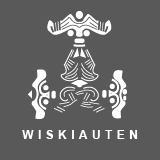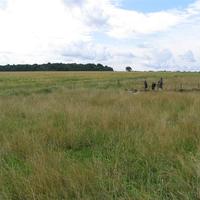The site
The small village of Wiskiauten (todays Mohovoe), which gives the Viking Age cemetery its name, lies imbedded in a rich archaeological landscape. Several settlements of the late Stone Age (ca. 2300 - 1600 B.C.) are supposed to be in the near surrounding. Burials of the Bronze Age (ca. 1600 - 800 B.C.) and Iron Age (ca. 800 - 1 B.C.) as well as burials dating to the Roman period (ca. 1 - 400 A.D.) are mentioned for the periphery of the little forest “Kaup”, indicating the dense settlement activities throughout all ages.
At the time the Wiskiauten burial mounds were erected, several settlements and flatgrave cemeteries of the Prussian Culture existed in the vicinity.
A Prussian cemetery of the 11th and 12th cent. A.D. that includes some late Viking Age elements lies next to the graveyard of Wiskiauten. Since the latter is of Scandinavian influence, the Viking Age elements in the Prussian cemetery gives a suggestion of the acculturation of the foreign Scandinavian settlers after the actual Viking Age.
The Viking Age complex of Wiskiauten consists of the well-known burial mound cemetery on the one hand and a settlement on the other, which is supposed to be in the near surrounding.
[top]


